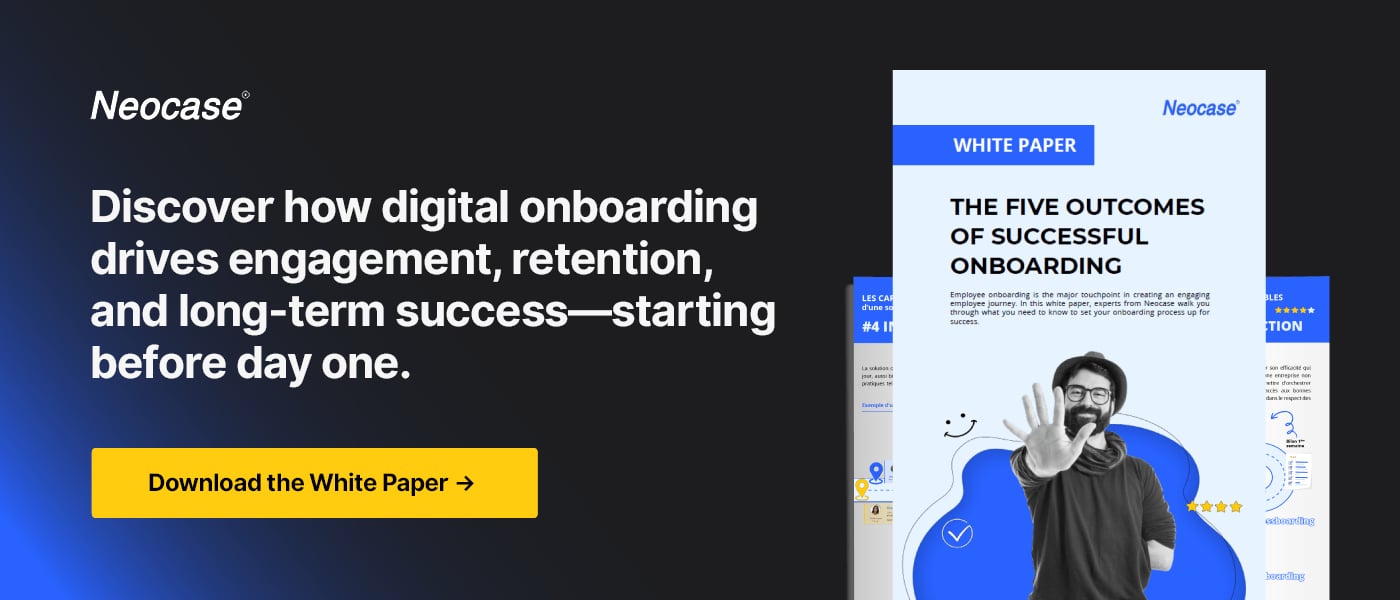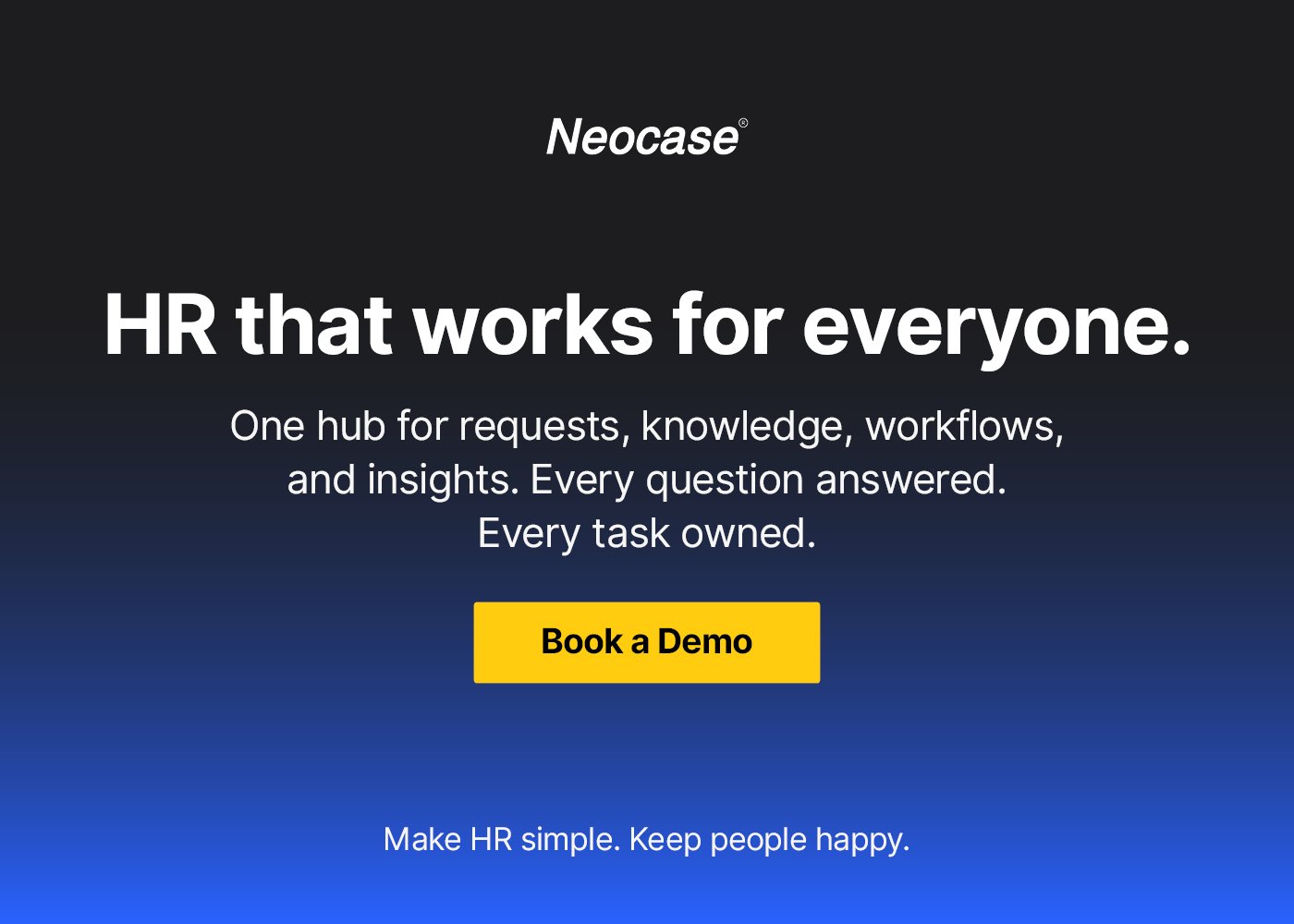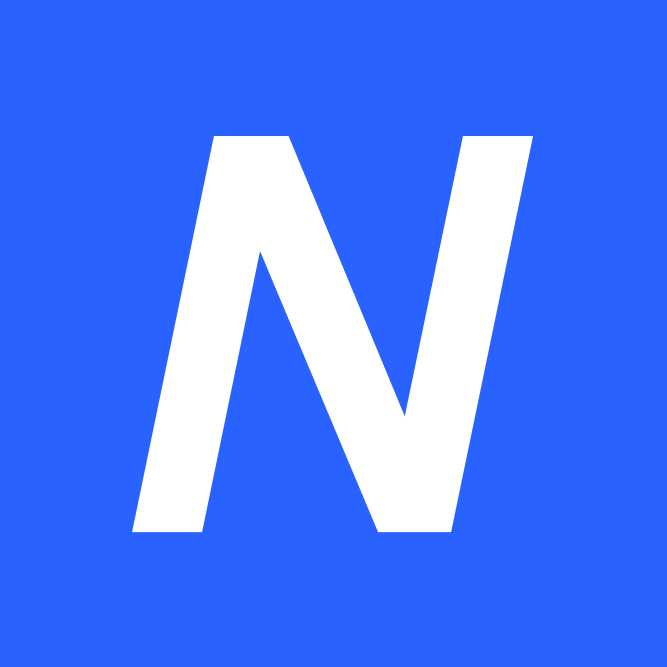
Every new hire tells a story. Some start with excitement and end with loyalty. Others don’t make it past the offer letter. Learn how improving preboarding and onboarding with automation can keep new hires engaged, boost retention, and strengthen every step of the employee journey.
For many HR teams, the employee journey looks smooth on a PowerPoint slide: preboarding, onboarding, crossboarding, reboarding, offboarding. In reality, it’s a maze of disconnected systems, manual follow-ups, and well-intentioned chaos. It’s not that HR isn’t trying. It’s that the tools and processes weren’t built for the modern workforce.
Your candidate experience often ends right where your HR chaos begins. And that gap is costing you talent, productivity, and brand reputation. Employee journey software and HR automation close that gap by connecting every stage—from preboarding to offboarding—so you deliver the seamless experience employees expect and the operational efficiency HR needs.
The preboarding problem: the dropout no one talks about.
Somewhere between the offer letter and the first day, silence creeps in. Emails slow down. IT is still “provisioning hardware.” The hiring manager forgets to send a welcome note.
And the candidate? They’re getting cold feet.
According to the 2025 SHRM Talent Trends press release, 41% of organizations say candidates “ghost” them during interviews—a sign of weak communication, slow follow-up, and inconsistent preboarding.
For large enterprises, pre-Day-1 drop-off adds up quickly in recruiting costs, delayed start dates, and lost productivity. Treating preboarding as the start of the employee journey—not a waiting period—is critical.
Snapshot: Preboarding (Offer → Day 1)
Key challenges: communication gaps, missing equipment, delayed background checks, unprepared managers.
Business impact: higher candidate withdrawals, slower onboarding readiness, and added strain on HR teams.
The fix lies in preboarding automation.
- Digitize forms, contracts, and background checks.
- Trigger IT setup tasks automatically.
- Keep new hires engaged with personalized updates, welcome videos, and access to resources before they arrive.
These preboarding best practices reduce uncertainty and build early connection. With employee onboarding software, HR can focus on people while automation handles the logistics.
In a manufacturing plant, for instance, new line workers often need safety certifications, equipment allocations, and shift schedules set up before their first day. With preboarding automation, those steps happen seamlessly: credentials are assigned, training modules are unlocked, and uniforms are ready. By the time the employee walks in, they’re not waiting—they’re working.
It’s the same in a hospital or clinic. When a new nurse or technician joins, preboarding automation ensures compliance forms, background checks, and access badges are completed before day one. That means less time chasing paperwork and more time shadowing colleagues, learning procedures, and becoming part of the care team.
Imagine this: a candidate receives a welcome email immediately after signing, with a checklist, a short video from their manager, and a secure portal for uploading documents. IT is automatically notified to prepare their laptop and credentials. On Day 1, everything—and everyone—is ready.
When preboarding runs smoothly, employees arrive confident and engaged. When it doesn’t, some never arrive at all.
Onboarding chaos: the cost of a rough start.

Now imagine your new hire makes it to Day 1—only to find a broken Wi-Fi password, missing equipment, and unclear instructions. HR is chasing approvals, and the manager is double-booked.
That’s not onboarding. That’s damage control.
Weak onboarding programs are one of the biggest hidden costs in HR. Research consistently shows that a substantial slice of turnover happens soon after start. SHRM reporting notes “up to 20% of turnover occurs in the first 45 days.” Replacing an employee typically costs about 20% of annual salary, based on the Center for American Progress’ review of 30+ case studies.
Onboarding isn’t just a checklist. It’s the emotional and operational foundation of your culture. When employees feel supported and informed, they ramp up faster and stay longer. When they don’t, they disengage—and often leave.
This is where onboarding automation and modern employee onboarding software transform the experience:
- Assign and track every onboarding task automatically.
- Give HR, IT, and managers shared visibility into progress.
- Send proactive reminders to prevent delays.
- Provide new hires with a centralized hub for forms, FAQs, and training.
Strong onboarding programs work. HBR (citing Glassdoor) reports that structured onboarding improves retention by 82% and productivity by 70%+.
Technology doesn’t replace the human touch; it gives HR more time to deliver it.
Picture a retail store preparing for peak season. Hundreds of associates need to be onboarded at once—each with training on registers, inventory systems, and customer service. Automated onboarding ensures every employee completes the right learning modules, receives uniform allocations, and understands store policies before their first shift. Day one isn’t chaos; it’s clock-in and go.
In industrial or construction settings, onboarding automation ensures that workers complete required safety briefings and equipment training digitally before entering the job site. When they arrive, they’re certified, cleared, and ready to contribute—reducing downtime and risk.
Why HR feels overwhelmed.
Most HR professionals already know what’s broken. They simply lack the bandwidth and integration to fix it. Between compliance checks, cross-department coordination, and a flood of emails, HR teams spend more time putting out fires than building strategy.
The irony? Many of the tools designed to help just add more logins.
Fragmented systems create data duplication, lost context, and inconsistent experiences. HR ends up juggling spreadsheets, portals, and disconnected workflows just to get through the day.
The problem isn’t effort. It’s fragmentation. You can’t deliver a unified journey when every phase lives in a separate system.
That’s why leading organizations are shifting to employee journey software—platforms that connect every phase of the employee lifecycle and integrate with existing HRIS tools. When combined with AI-assisted HR automation, HR can finally move from reactive to strategic, gaining real-time visibility into every stage of the journey.
To get started, many HR teams map the experience end-to-end through employee journey mapping exercises. You can download and use Neocase’s free Employee Journey Mapping Template to visualize touchpoints, identify gaps, and plan automation improvements.
The Neocase fix: simplifying every step of the employee journey.

Neocase was built for organizations that don’t just hire people—they invest in them. It unifies the entire employee lifecycle—preboarding, onboarding, crossboarding, reboarding, and offboarding—within one flexible, no-code platform.
With automation, analytics, and intelligent workflows, Neocase helps HR transform routine tasks into meaningful, connected experiences that scale globally while staying personal.
Preboarding: setting the tone early.
Neocase automates everything between “You’re hired” and “Welcome aboard.” Candidates complete forms, sign contracts, and access onboarding resources digitally. HR gains visibility, IT receives automatic notifications, and new hires feel supported from the start. Preboarding automation eliminates surprises and prevents first-day confusion.
Onboarding: turning chaos into clarity.
No more scattered spreadsheets or lost emails. Every task is assigned, tracked, and completed on time. Managers know what’s due, employees know what’s next, and HR has complete oversight. With onboarding automation, surveys and analytics provide feedback so HR can adjust and improve continuously.
Crossboarding: keep momentum going.
When employees transfer or move roles, Neocase ensures documentation, access, and compliance stay consistent.
Reboarding: welcome back the right way.
Support returning employees with updated policies, refreshed training, and easy reintegration—without manual setup chaos.
Offboarding: the last impression that lasts.
Automated exit workflows, document management, and knowledge transfers protect your organization while preserving goodwill.
Real-world proof: AXA Partners.

AXA Partners, an international division of AXA Group, manages more than 9,000 employees across 24 countries. The company provides assistance services, travel insurance, and loan and provident insurance, supported by both local HR teams and a shared-services model.
In 2020, AXA Partners launched Neocase HR to streamline and standardize HR support across regions. By deploying Neocase, AXA Partners digitized employee document management, onboarding and preboarding, and employee requests, replacing fragmented email workflows with an integrated digital platform.
Results included:
- Improved compliance and audit readiness across 50 legal entities.
- Faster response times and a better employee experience, with consistent onboarding quality across geographies.
- Greater visibility for strategic workforce planning, enabling smarter HR resource allocation.
- Simplified operations and productivity gains through integrations with third-party HRIS tools.
Kevin Michenet, Global HRIS Lead at AXA Partners, explained:
“Automation is a real challenge for an organization as complex as ours. The big advantage of the Neocase tool is that it offers enormous opportunities and flexibility in terms of customization.”
By leveraging employee journey software, AXA Partners created a unified, automated HR environment that reduced manual work, improved employee satisfaction, and set the stage for scalable HR automation worldwide.
The real ROI: what happens when it works.
When companies fix preboarding and onboarding, everything changes:
- Reduced early turnover. Nearly 20% of employees leave within the first 45 days—structured onboarding lowers that risk.
- Faster ramp-up. Streamlined workflows shorten the time to full productivity, with top programs improving performance by 70%+.
- Higher retention. Organizations with strong onboarding improve retention by 82%.
- Lower replacement costs. The average cost of turnover is around 20% of salary (varies by role and complexity).
The financial impact is measurable. The human impact is transformative. Employees who feel supported from day one stay longer, perform better, and become advocates for your brand.
For a technician, it might mean arriving at a facility with their ID badge, tools, and system access already in hand. For a retail associate, it means knowing their schedule, uniform, and manager before stepping onto the sales floor. For a nurse, it means being welcomed into their unit with a personalized onboarding path that covers both procedures and people. In every case, the result is the same: an employee who feels like part of the company before day one.
The future of employee experience: people first, powered by technology.

AI isn’t here to replace HR. It’s here to make HR more human.
Imagine onboarding checklists that update automatically. Imagine employees asking a chatbot about benefits or policies and getting accurate answers in seconds. Imagine seeing engagement trends early enough to prevent attrition.
This is the future of employee journey software—and it’s already here.
The next evolution of HR automation connects systems, data, and people across every stage of employment. It personalizes each journey, adapts to local requirements, and gives HR teams real-time insight to act faster and smarter.
At the end of the day, employees don’t want to feel processed. They want to feel prioritized. The right technology makes that possible.
The journey is the brand.
Every moment—from preboarding to offboarding—tells employees what your company stands for.
They might forget the forms they filled out, but they’ll remember how you made them feel when they joined, grew, and even when they left.
Your employee journey isn’t just a workflow. It’s your culture in motion. With onboarding automation, preboarding automation, and a unified employee journey platform like Neocase, you can turn every step of the process into an experience that builds trust, strengthens culture, and inspires loyalty.
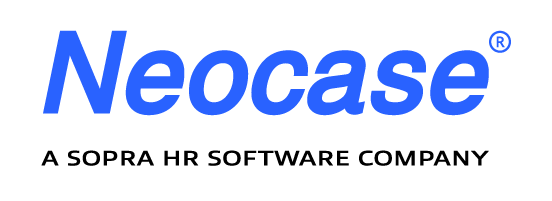
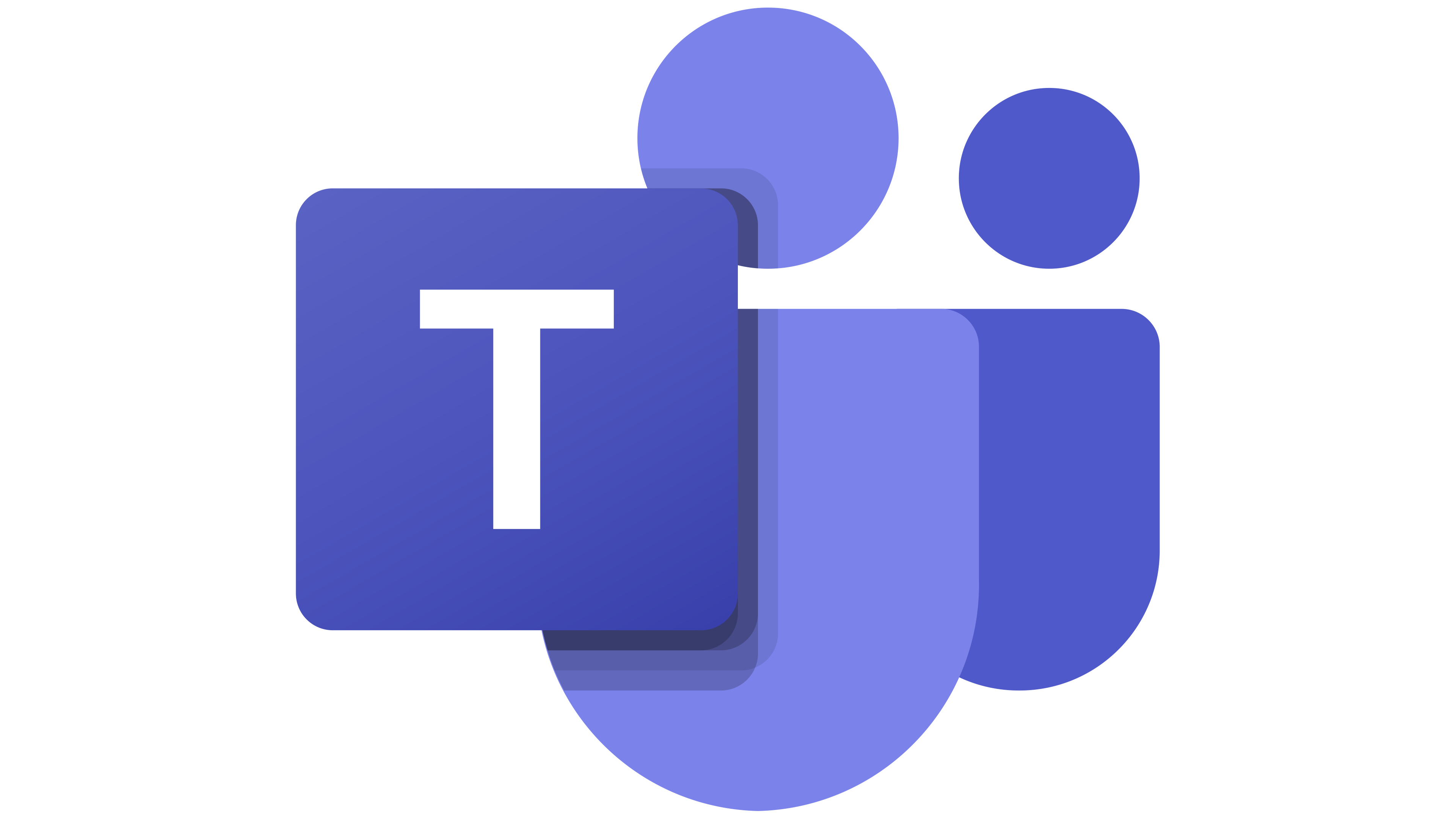 Microsoft Teams
Microsoft Teams
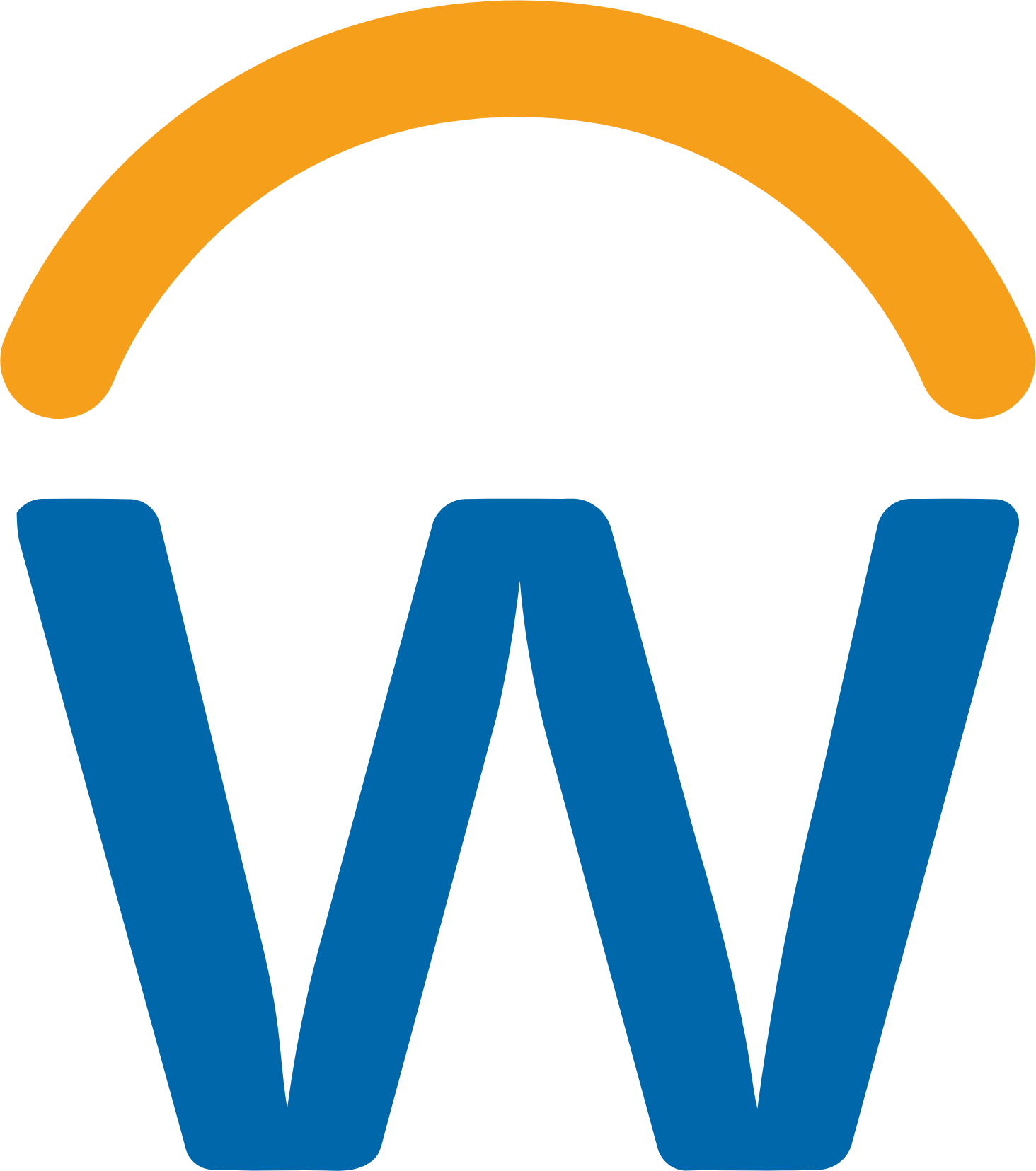 Workday
Workday
